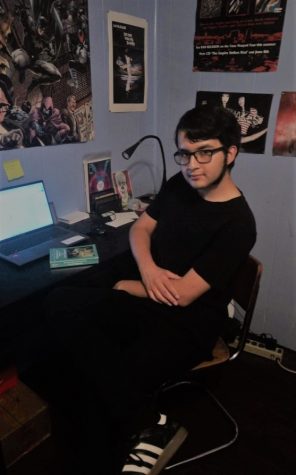Umbrella Academy: From the Printed Page to the Small Screen
March 5, 2019
On Feb. 16, Netflix released the first season of their adaptation of the cult-hit comic book “Umbrella Academy”. The series was illustrated by artist Gabriel Ba and written by Gerard Way, best known for his tenure as frontman of the rock band My Chemical Romance.
To call the series a risk for Netflix is something of an understatement. It follows a dysfunctional family of superheroes who are reunited by the death of their millionaire-inventor, adoptive father and soon discover that they must prevent the impending apocalypse. Other plot points include a humanoid ape butler, manic time-travelling assassins, and an orchestra conducted by an evil cyborg. Such an offbeat premise does not exactly scream hit TV show, so Netflix made changes to the source material to make the story work for the small screen.
The biggest change made to the story was splicing together the first two comic arcs (Apocalypse Suite and Dallas) to create the storyline of season one. The plot of stopping the apocalypse from the first comic arc is kept, but it also features time travel elements that were not introduced to the series until the second arc.
This helps to create a more well-rounded and intriguing narrative. The restriction of the comic’s time travel aspects to its second arc made many of the mysteries in the first arc feel less important, as they seem to have little pay-off. With the time-travel elements being revealed early on, the answer to each mystery feels like it will help further the viewer’s understanding of the show’s world.
Another big change made to the series is its removal of the more fantastical aspects of the comics. The book took the time to revel in its strange world, whereas the show does not. The protagonists often battled against robots, zombies, and sentient Eiffel towers. The show largely ignores these elements in favor of more grounded storytelling.
This largely works in the show’s favor, as it gives more weight to the major twists towards the end of the season. The comic’s climax attempted to elicit shock by cramming all the bizarre elements it can together, but they do not necessarily feel new and strange after a whole arc full of ghosts and deadly violinists. The show alleviates this by removing most fantastic elements and using the few it does keep as plot twists.
While heavily altering source material is often criticized by fans, “Umbrella Academy” uses its changes to derive the full potential from the template story. Despite the changes it makes, Netflix’s “Umbrella Academy” proves to be a stunning superhero drama that eclipses the comic it is based on.



